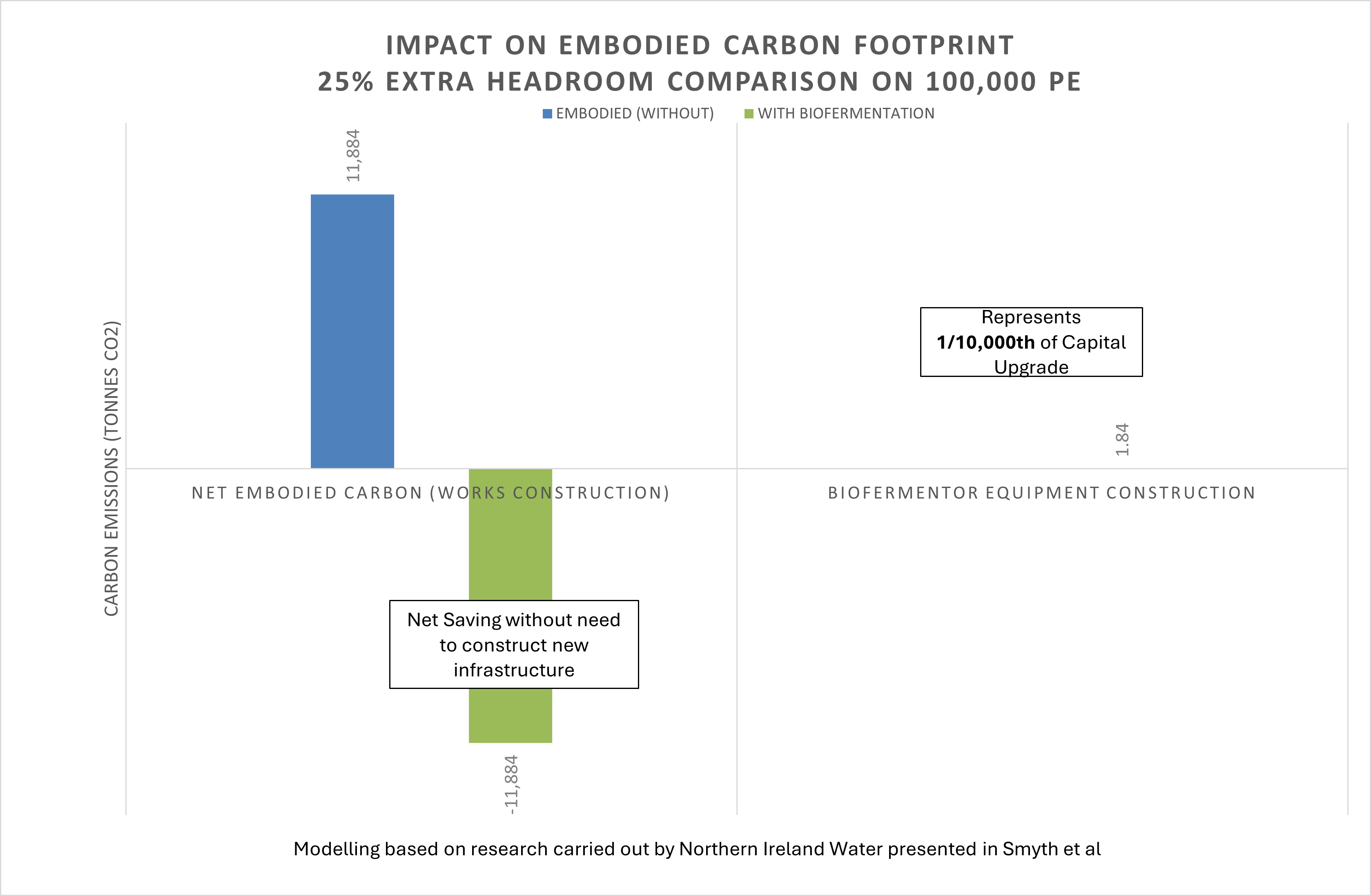The drive for Net Carbon Zero
Biofermentation represents 1/10,000th of the carbon cost of a capital upgrade and 1/1000th the carbon of operating that upgraded plant.
ABS, with the assistance of AECOM, have modelled total carbon emissions around wastewater treatment operation, including sludge processing and disposal.
Northern Ireland Water in conjunction with Queens University Belfast have modelled total carbon emissions around construction of a wastewater treatment works.
With Biofermentation, a WWTW may be constructed 25% smaller with a corresponding reduction in carbon emissions. Even taking into account construction and transport of Biofermentor equipment, Biofermentation represents 1/10,000th of the carbon cost of a capital upgrade to provide 25% extra throughput and capacity to a treatment works.
A reduction in annual operating carbon is realised by the many benefits of Biofermentation. Reduced electricity use for aeration and reduced sludge production at point source are the main drivers.
Improved oxygen transfer efficiency allows Variable Frequency blowers to provide the same level of dissolved oxygen to treatment with much less energy use; this has slashed electricity use by 25% in a UK WWTW.
This reduction in electricity use is of paramount importance not only due to rising costs, but from a net carbon zero viewpoint.
Improved settleability and oxygen transfer efficiency also allows for a reduction in biosolids/sludge make at point source.
In an unoptimized system in the UK, the simple addition of Biofermentation has reduced sludge production in the aeration basin by 40%


